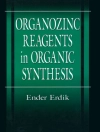Now in it’s 3rd Edition, Industrial Catalysis offers all relevant information on catalytic processes in industry, including many recent examples. Perfectly suited for self-study, it is the ideal companion for scientists who want to get into the field or refresh existing knowledge.
The updated edition covers the full range of industrial aspects, from catalyst development and testing to process examples and catalyst recycling. The book is characterized by its practical relevance, expressed by a selection of over 40 examples of catalytic processes in industry. In addition, new chapters on catalytic processes with renewable materials and polymerization catalysis have been included. Existing chapters have been carefully revised and supported by new subchapters, for example, on metathesis reactions, refinery processes, petrochemistry and new reactor concepts.
‘I found the book accesible, readable and interesting – both as a refresher and as an introduction to new topics – and a convenient first reference on current industrial catalytic practise and processes.’
Excerpt from a book review for the second edition by P. C. H. Mitchell, Applied Organometallic Chemistry (2007)
Tabella dei contenuti
Preface to the Third Edition XV
Abbreviations XVII
1 Introduction 1
1.1 The Phenomenon Catalysis 1
1.2 Mode of Action of Catalysts 2
1.2.1 Activity 4
1.2.1.1 Turnover Frequency TOF 6
1.2.1.2 Turnover Number TON 7
1.2.2 Selectivity 7
1.2.3 Stability 8
1.2.4 Mole Balance and Conversion 8
1.3 Classification of Catalysts 10
1.4 Comparison of Homogeneous and Heterogeneous Catalysis 11
Exercises 14
References 15
2 Homogeneous Catalysis with Transition Metal Catalysts 17
2.1 Key Reactions in Homogeneous Catalysis 18
2.1.1 Coordination and Exchange of Ligands 18
2.1.2 Complex Formation 20
2.1.3 Acid–Base Reactions 22
2.1.4 Redox Reactions: Oxidative Addition and Reductive Elimination 23
2.1.4.1 Oxidative Coupling and Reductive Cleavage 27
2.1.5 Insertion and Elimination Reactions 28
2.1.5.1 β-Elimination 30
2.1.5.2 α-Elimination 30
2.1.6 Reactions at Coordinated Ligands 31
2.2 Catalyst Concepts in Homogeneous Catalysis 32
2.2.1 The 16/18-Electron Rule 32
2.2.2 Catalytic Cycles 34
2.3 Characterization of Homogeneous Catalysts 35
2.3.1 Infrared Spectroscopy 38
2.3.2 NMR Spectroscopy 40
Exercises 42
References 45
3 Homogeneously Catalyzed Industrial Processes 47
3.1 Overview 47
3.2 Examples of Industrial Processes 48
3.2.1 Oxo Synthesis 50
3.2.2 Production of Acetic Acid by Carbonylation of Methanol 52
3.2.3 Selective Ethylene Oxidation by the Wacker Process 55
3.2.4 Oxidation of Cyclohexane 57
3.2.5 Suzuki Coupling 58
3.2.6 Oligomerization of Ethylene (SHOP Process) 59
3.2.7 Telomerization of Butadiene 61
3.2.8 Adipodinitrile 63
3.3 Asymmetric Catalysis 63
3.3.1 Introduction 63
3.3.2 Catalysts 64
3.3.3 Commercial Applications 65
3.3.3.1 Asymmetric Hydrogenation 65
3.3.3.2 Enantioselective Isomerization: L-Menthol 67
3.3.3.3 Asymmetric Epoxidation 68
3.4 Alkene Metathesis 69
3.4.1 Examples of Heterogeneous Catalysis 72
3.5 Recycling of Homogeneous Catalysts 73
3.5.1 Overview 73
3.5.1.1 Precipitation of the Catalyst or of the Product(s) 73
3.5.1.2 Thermal Separation 73
3.5.1.3 Membrane Separation 73
3.5.1.4 Adsorption 74
3.5.1.5 Phase Separation/Extraction 74
3.5.2 Reactions in Two-Phase Liquid–Liquid Systems 74
Exercises 76
References 78
4 Biocatalysis 81
4.1 Introduction 81
4.1.1 Active Sites 83
4.1.2 Coenzymes 84
4.2 Kinetics of Enzyme-Catalyzed Reactions 84
4.3 Industrial Processes with Biocatalysts 90
4.3.1 Acrylamide from Acrylonitrile 90
4.3.2 Aspartame Through Enzymatic Peptide Synthesis 91
4.3.3 L-Amino Acids by Aminoacylase Process 92
4.3.4 Pharmaceuticals 93
4.3.5 Herbicides 95
4.3.5.1 4-Hydroxyphenoxypropionic Acid as Herbicide Intermediate 96
Exercises 97
References 97
5 Heterogeneous Catalysis: Fundamentals 99
5.1 Individual Steps in Heterogeneous Catalysis 99
5.2 Kinetics and Mechanisms of Heterogeneously Catalyzed Reactions 101
5.2.1 The Importance of Adsorption in Heterogeneous Catalysis 102
5.2.2 Kinetic Treatment 106
5.2.3 Mechanisms of Heterogeneously Catalyzed Gas-Phase Reactions 108
5.2.3.1 Langmuir–Hinshelwood Mechanism (1921) 109
5.2.3.2 Eley–Rideal Mechanism (1943) 111
5.3 Catalyst Concepts in Heterogeneous Catalysis 113
5.3.1 Energetic Aspects of Catalytic Activity 113
5.3.2 Steric Effects 124
5.3.3 Electronic Factors 134
5.3.3.1 Redox Catalysts 134
5.3.3.2 Acid/Base Catalysts (Ionic Catalysts) 135
5.3.3.3 Metals 136
5.3.3.4 Bimetallic Catalysts 140
5.3.3.5 Semiconductors 144
5.3.3.6 Insulators: Acidic and Basic Catalysts 157
5.4 Catalyst Performance 164
5.4.1 Factors Which Affect the Catalyst Performance 164
5.4.2 Supported Catalysts 166
5.4.3 Promoters 172
5.4.4 Inhibitors 176
5.5 Catalyst Deactivation 177
5.5.1 Catalyst Poisoning 179
5.5.2 Poisoning of Metals 179
5.5.3 Poisoning of Semiconductor Oxides 182
5.5.4 Poisoning of Solid Acids 182
5.5.5 Deposits on the Catalyst Surface 183
5.5.6 Thermal Processes and Sintering 185
5.5.7 Catalyst Losses via the Gas Phase 186
5.6 Regeneration and Recycling of Heterogeneous Catalysts 186
5.7 Characterization of Heterogeneous Catalysts 189
5.7.1 Physical Characterization 190
5.7.1.1 Temperature-Programmed Desorption 195
5.7.2 Chemical Characterization and Surface Analysis 195
5.7.2.1 Temperature-Programmed Reaction Methods 196
5.7.2.2 Transmission Electron Microscopy 197
5.7.2.3 Low-Energy Electron Diffraction (LEED) 198
5.7.2.4 IR Spectroscopy 199
5.7.2.5 Electron Spectroscopy for Chemical Analysis (ESCA) 199
5.7.2.6 Auger Electron Spectroscopy (AES) 201
5.7.2.7 Ion Scattering Spectroscopy (ISS) 201
5.7.2.8 Secondary Ion Mass Spectrometry (SIMS) 202
Exercises 203
References 209
6 Catalyst Shapes and Production of Heterogeneous Catalysts 211
6.1 Introduction 211
6.2 Bulk Catalysts 212
6.2.1 Precipitation 212
6.2.2 Fusion and Alloy Leaching 214
6.2.3 Sol–Gel Synthesis 215
6.2.4 Flame Hydrolysis 217
6.2.5 Hydrothermal Synthesis 217
6.2.6 Heteropolyacids 219
6.3 Supported Catalysts 219
6.3.1 Impregnation 220
6.3.2 Coprecipitation 225
6.3.3 Adsorption/Ion-Exchange 226
6.3.3.1 Ion-Exchange Resins 227
6.3.4 Anchoring/Grafting 228
6.3.5 Monolithic Catalysts 229
6.4 Shaping of Catalysts and Catalyst Supports 230
6.5 Immobilization of Homogeneous Catalysts 232
6.5.1 Supported Solid-Phase Catalysts (SSPC) 234
6.5.2 Supported Liquid-Phase Catalysts (SLPC) 236
6.5.3 Encapsulation 236
Exercises 237
References 238
7 Shape-Selective Catalysis: Zeolites 239
7.1 Composition and Structure of Zeolites 239
7.2 Catalytic Properties of the Zeolites 242
7.2.1 Shape Selectivity 243
7.2.1.1 Reactant Selectivity 243
7.2.1.2 Product Selectivity 246
7.2.1.3 Restricted Transition State Selectivity 246
7.2.2 Acidity of Zeolites 247
7.3 Isomorphic Substitution of Zeolites 251
7.4 Metal-Doped Zeolites 252
7.5 Applications of Zeolites 255
Exercises 258
References 259
8 Heterogeneously Catalyzed Processes in Industry 261
8.1 Overview 261
8.1.1 Production of Inorganic Chemicals 261
8.1.2 Production of Organic Chemicals 261
8.1.3 Refinery Processes 262
8.1.4 Catalysts in Environmental Protection 264
8.2 Examples of Industrial Processes – Bulk Chemicals 266
8.2.1 Ammonia Synthesis 266
8.2.2 Hydrogenation 268
8.2.3 Methanol Synthesis 270
8.2.4 Selective Oxidation of Propene 272
8.2.4.1 Oxidation of Propene with H2O2 to Propylene Oxide 277
8.2.5 Selective Oxidation of Hydrocarbons 277
8.2.5.1 n-Butane to Maleic Anhydride 278
8.2.5.2 o-Xylene to Phthalic Anhydride 280
8.3 Fine Chemicals Manufacture 281
8.3.1 Fine Chemicals and Their Synthesis 281
8.3.2 Selected Examples of Industrial Processes 285
8.3.2.1 Hydrogenation 286
8.3.2.2 Oxidation 288
8.3.2.3 Catalytic C–C Linkage 290
8.3.2.4 Acid/Base Catalysis 292
Exercises 294
References 297
9 Refinery Processes and Petrochemistry 299
9.1 Hydrotreating 300
9.2 Catalytic Cracking 302
9.3 Hydrocracking 304
9.4 Catalytic Reforming 306
9.5 Alkylation 307
9.6 Hydroisomerization 308
9.7 Synthesis Gas and Hydrogen by Steam Reforming 310
9.8 Natural Gas Conversion to Fuels and Chemicals 312
9.9 Fischer–Tropsch Synthesis 313
9.10 Etherification Reactions 315
Exercises 316
References 317
10 Electrocatalytic Processes 319
10.1 Comparison Between Electrocatalysis and Heterogeneous Catalysis 319
10.2 Electroorganic Syntheses 319
10.2.1 Electrocatalytic Hydrogenation 320
10.2.2 Electrocatalytic Oxidation 322
10.2.3 Electrochemical Addition 323
10.3 Electrocatalysis in Fuel Cells 324
10.3.1 Basic Principles 324
10.3.2 Types of Fuel Cell and Catalyst 325
10.3.3 Important Reactions in Fuel Cell Technology 328
10.3.3.1 The Anodic Reaction 328
10.3.3.2 The Cathodic Reaction 329
10.3.3.3 Methanol Oxidation 331
Exercises 332
References 333
11 Environmental Catalysis and Green Chemistry 335
11.1 Automotive Exhaust Catalysis 335
11.2 NOx Removal Systems 338
11.2.1 Selective Catalytic Reduction of Nitrogen Oxides 338
11.2.2 NOx Storage-Reduction Catalyst for Lean-Burning Engines 340
11.3 Catalytic Afterburning 341
11.4 Green Chemistry and Catalysis 344
11.4.1 Examples of Catalytical Processes 345
11.4.1.1 Aldol Condensation 345
11.4.1.2 Diels–Alder Reaction 346
11.4.1.3 Hydrogenation 347
11.4.1.4 Cyclization in Water 347
11.4.1.5 Use of Ionic Liquids 347
11.4.1.6 Green Solvents 349
Exercises 350
References 351
12 Phase-Transfer Catalysis 353
12.1 Definition 353
12.2 Catalysts for PTC 353
12.3 Mechanism and Benefits of PTC 354
12.4 PTC Reactions 355
12.5 Selected Industrial Processes with PTC 356
12.5.1 Continuous Dehydrohalogenation to Produce the Large-Scale Monomer Chloroprene 356
12.5.2 Polycarbonate Manufacture with Phosgene 356
12.5.3 Etherification (O-Alkylation) 357
12.5.4 Aldehydes by Oxidation of Alcohols with Hypochlorite 357
12.5.5 Carbonylation 357
12.5.6 2-Phenylbutyronitrile by Alkylation 358
Exercises 359
References 359
13 Catalytic Processes with Renewable Materials 361
13.1 Biofuels 361
13.2 Biorefinery 366
13.2.1 Lignocellulose Feedstock Biorefinery 368
13.3 Chemicals from Biomass 369
13.3.1 Chemicals from Biomass via Platform Molecules 369
13.3.1.1 Carbohydrates 369
13.3.1.2 Fats and Oils 373
13.3.1.3 Terpenes 375
13.3.2 Direct Biomass Conversion to End-Products 376
Exercises 378
References 378
14 Polymerization Catalysis 381
14.1 Introduction 381
14.2 Fundamentals of Catalytical Polymerization Processes 381
14.3 Coordination Polymerization 383
14.3.1 Ziegler–Natta Catalysts 383
14.3.1.1 Heterogeneous Ziegler–Natta Catalysts 384
14.3.1.2 Homogeneous Ziegler–Natta Catalysts 386
14.3.1.3 Metallocenes 386
14.3.1.4 Ring-Opening Metathetic Polymerization 388
14.4 Examples of Catalytical Polymerization Processes 389
14.4.1 Polyethylene Production 389
14.4.2 Polypropylene Production 391
Exercises 392
References 393
15 Planning, Development, and Testing of Catalysts 395
15.1 Stages of Catalyst Development 395
15.2 Development of a Catalytical Process: Hydrogenation of Benzene to Cyclohexane 398
15.3 Selection and Testing of Catalysts in Practice 401
15.3.1 Catalyst Screening 401
15.3.2 Catalyst Test Reactors and Kinetic Modeling 405
15.3.2.1 Differential Reactor 405
15.3.2.2 Differential Circulating Reactor 407
15.3.2.3 Integral reactor 411
15.3.3 Kinetic Modeling and Simulation 416
15.3.3.1 Hydrogenation of Benzaldehyde 416
15.3.3.2 Modeling of a Trickle Bed Reactor 420
15.3.4 Catalyst Discovery via High-Throughput Experimentation 427
Exercises 430
References 430
16 Catalysis Reactors 433
16.1 Plug Flow Reactor (PFR) 433
16.2 Continuous Stirred-Tank Reactor (CSTR) 435
16.3 Reactor Calculations 436
16.4 Two-Phase Reactors 440
16.4.1 Single-Bed Reactor 441
16.4.2 Multibed Reactor 441
16.4.3 Multitubular Reactors 442
16.4.4 Shallow-Bed Reactors 442
16.4.5 Fluidized-Bed Reactors 443
16.5 Three-Phase Reactors 443
16.5.1 Fixed-Bed Reactors 445
16.5.2 Suspension Reactors 447
16.6 Reactors for Homogeneously Catalyzed Reactions 451
16.7 New Reactor Concepts 452
16.7.1 Membrane Reactors 452
16.7.2 Catalytic Reactive Distillation 453
16.7.3 Catalytic Microreactors 454
Exercises 455
References 457
17 Economic Importance of Catalysts 459
References 462
18 Future Development of Catalysis 463
18.1 Homogeneous Catalysis 463
18.2 Heterogeneous Catalysis 465
18.2.1 Use of Other Cheaper Raw Materials 467
18.2.2 Catalysts for Energy Generation 468
18.2.3 Better Strategies for Catalyst Development 469
References 472
Solutions to the Exercises 473
Index 513
Circa l’autore
Jens Hagen gives vocational training seminars on catalysis throughout the world and until his retirement he was Professor of Technical Chemistry at Mannheim University of Applied Sciences (Germany). The input he received through his international courses had an active influence on the content of the current edition of ‘Industrial Catalysis’. Jens Hagen completed his first degree in chemical engineering in Essen (Germany), before studying chemistry at RWTH Aachen (Germany). He gained his doctorate in 1975 in the field of catalysis and high-pressure synthesis. Following a period in industry at Henkel KGa A, Dusseldorf (Germany), he was appointed as Professor at Mannheim University of Applied Sciences in 1979. Professor Hagen’s teaching and research at the faculty of Chemical and Process Engineering focused on chemical reaction engineering and technical catalysis. In addition, he was the head of the Steinbeis Transfer Center for Process Engineering, Biotechnology and Environmental Techniques for many years.












